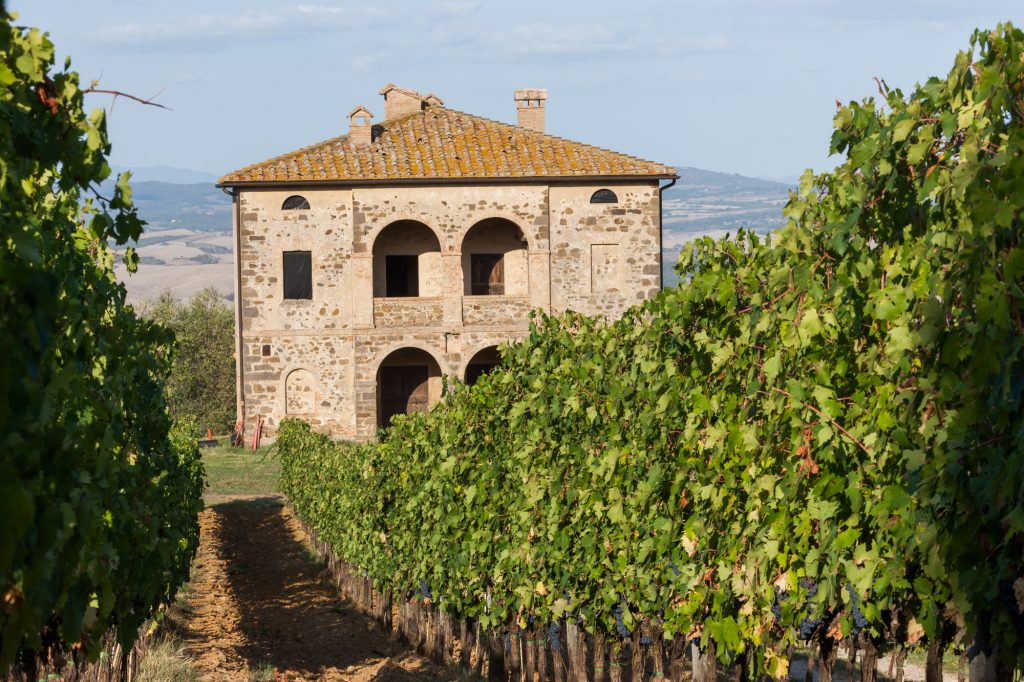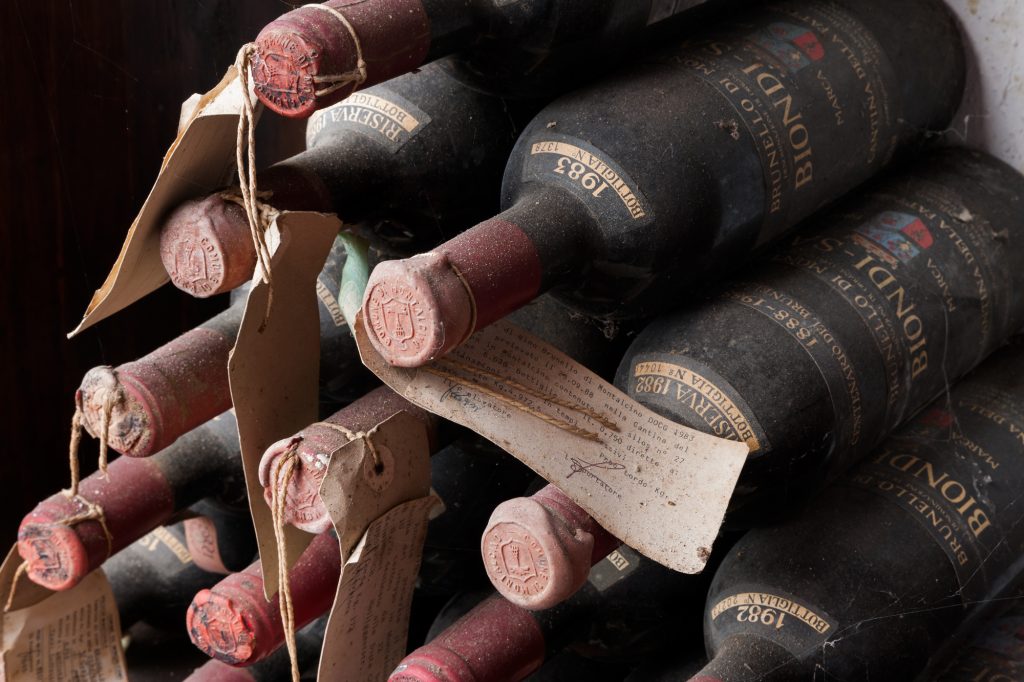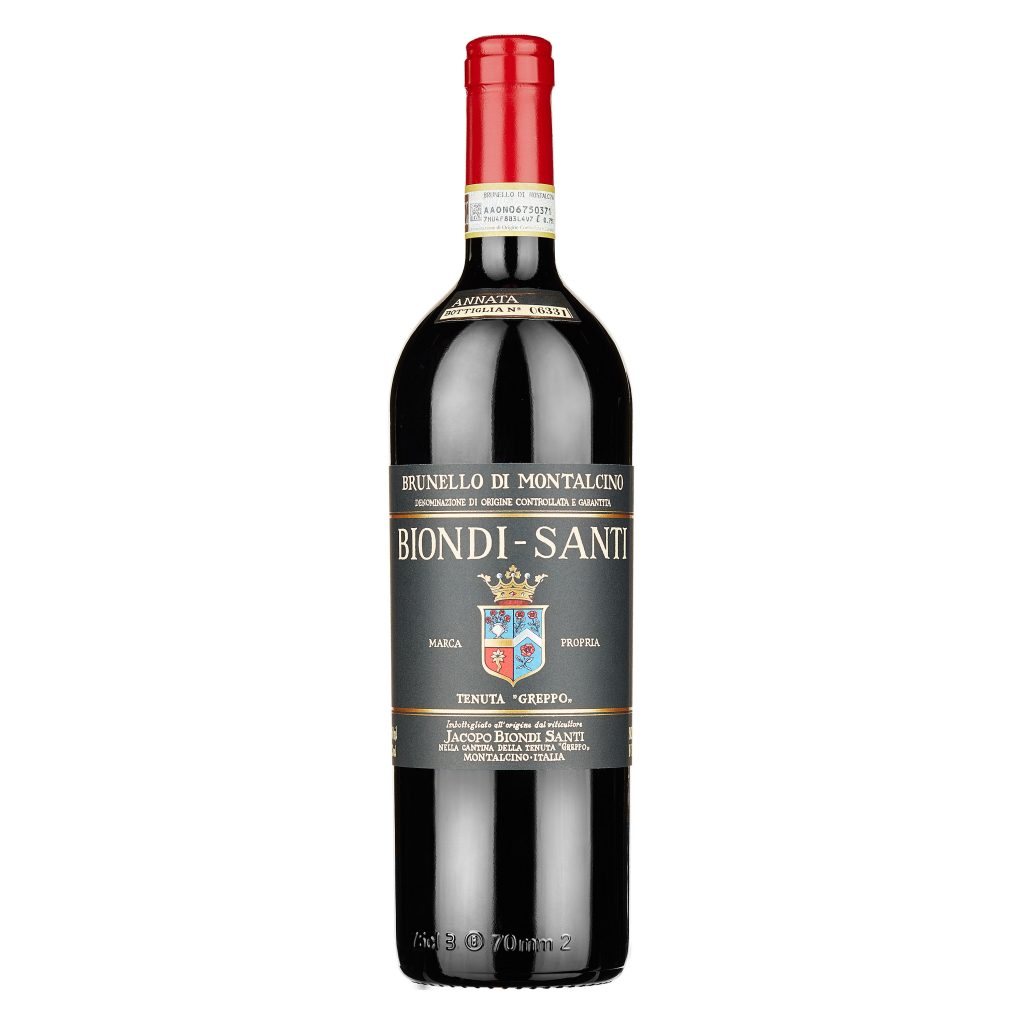While some winemakers are famous for flouting the rules (plenty of these in Italy), another breed take the best of tradition and improve it. Franco Biondi Santi was among the latter. He firmly believed in the tradition of single varietal Sangiovese matured in large old barrels of Slavonian oak.
This is perhaps not surprising as his family were instrumental in developing the wine we know today as Brunello di Montalcino when Clemente Santi won acclaim at the regional agricultural fair for his “rosso scelto” del 1865 – wine made from the clone of Sangiovese, which became known as Brunello and is now planted throughout the region.
Not everyone was convinced by Sangiovese. It was widely considered to be a rather a ‘work horse’ grape variety, incapable of making a great wine on its own and by the 1970s it became fashionable in Tuscany to blend it with Bordeaux varieties and age it in new French barriques.
Meanwhile the Biondi Santi family eschewed fashion and continued their pursuit of the best quality of vine material. Franco Biondi Santi identified a super clone – Sangiovese Grosso BBS/11. He continued the work of his grandfather Ferruccio who began selecting the very best plant material from the vineyards at Tenuta Greppo as far back as the 1800s. Franco Biondi Santi focused on understanding of the complexities of the terroir, work which continues today through micro-vinifications of small parcels of vines across the Greppo estate.

The Greppo estate lies in the South East of Montalcino with vines planted on hillsides between 385-507m in stony, marl rich soil. The riserva is made from a selection of the oldest vines planted on the highest parcels. Franco-Biondi Santi expanded the estate from four hectares to the current twenty-five and his work and encouragement inspired many others to produce Brunello di Montalcino. The seventy-six hectares registered to Brunello in 1967 is now over two thousand.
Biondi Santi produces three wines. The younger vines are used for Rosso di Montalcino; the middle aged vines become Brunello di Montalcino, while the vines over twenty-five years may become Brunello di Montalcino Riserva, but only in exceptional years. Just forty vintages of riserva have been made since 1888.

The riserva 2012 was the last vintage made by Franco Biondi Santi who passed away in 2013. In 2016 the Greppo estate was sold to French company EPI, owned by Christopher Descours, who are committed to continuing Franco’s work. The 40th vintage of the riserva has recently been released. ( 2013 vintage). Of the three wines I tasted, I particularly liked the rosso and the riserva.
Rosso di Montalcino 2017
2017 was a hot and dry summer with the harvest from mid September. This is aged for 12 months in Slavonian oak barrels. 13.5% alcohol.
Ripe red fruit aroma with a dusky rose petal and peppery note. Plump and generous with ripe summer fruits, underscored with tanginess. The texture is soft and the tannins smooth, but with some crunch on the finish. It’s very appetising. Drinking now until 2027.
Brunello di Montalcino Riserva 2013
Rainy spring delayed the start of the growing season. From mid July the weather was warm with marked swings between day and night temperatures. The harvest began a little later than usual towards the end of September. The reserve is matured in Slavonian oak for three years. 13.5% alcohol.
Most alluring gamey aroma, somewhat sweet and feral with a hint of basil. Slips onto the palate on supple tannins. It has a sophisticated texture, sleek and rippling, and is underpinned by lively freshness and tangy energy. It has intensity and silky, elegant persistence. It’s also rather aromatic with anise and fennel frond and on the finish, a light hint of mint. I think this is a lovely moment to enjoy the wine while it still shows the vibrancy of youth with the complexities of some age. As it matures further, it will become more tertiary, complex and fragile, but not necessarily better. Now-2035+
http://biondisanti.com/Eng/home_en.php



